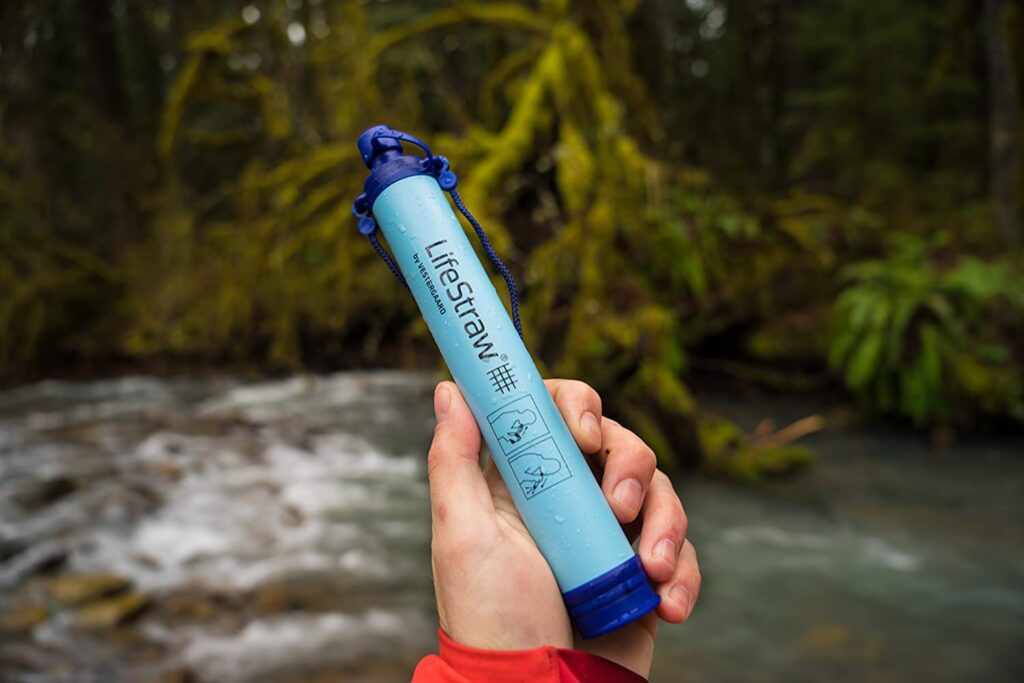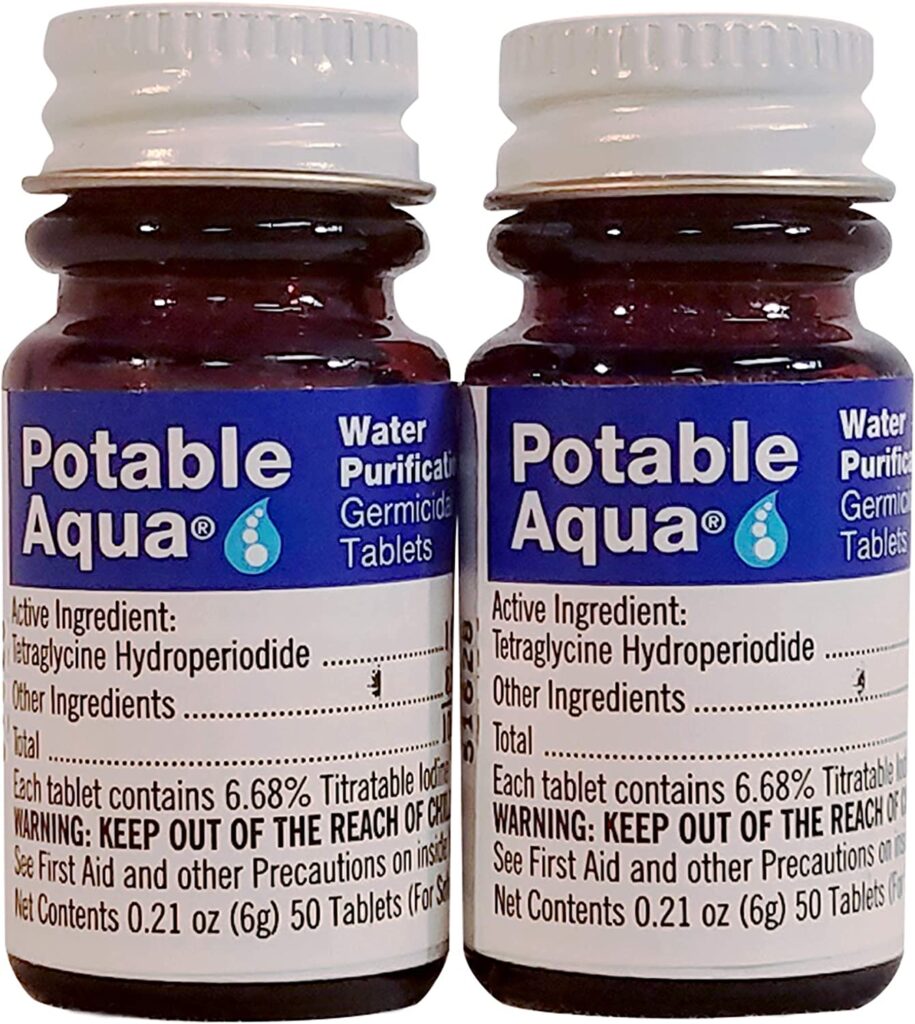The Ultimate Guide to Water Purification
Ensuring that you have clean drinking water.
For most of us, water is super accessible. However, in a survival situation, having access to clean and safe drinking water is not always a certainty. Natural disasters, emergencies, and other unpredictable events can contaminate your water supply, making it unsafe for consumption. Without clean water, dehydration, illness, and even death can quickly become a real danger. Having emergency water and understanding the various methods of water filtration and purification can lifesaving in times of crisis.
In this article, we’ll explore the different methods of water filtration and purification, their effectiveness, and how to use them to ensure that you have access to clean and safe drinking water in a survival situation. Whether you’re caught in a natural disaster or just looking to prepare for the unexpected, this guide will provide you with the information you need to make informed decisions about emergency water storage and purification methods that can help you survive in times of crisis.
Please note that this content is reader supported. By clicking our links, we may earn a commission. Thanks!
Water Contamination
Water can become contaminated in a disaster in several ways, including:
- Flooding: Flood waters can carry sewage, chemicals, and other hazardous substances, which can contaminate the water supply.
- Damage to water treatment plants and distribution systems: Disasters such as earthquakes, hurricanes, and tornadoes can damage water treatment plants and distribution systems, causing pipes to break and water to become contaminated.
- Backflow: When water pressure is disrupted, contaminated water from the ground, sewer lines, or other sources can be drawn back into the water supply.
- Chemical spills: Accidental spills or leaks of hazardous chemicals can contaminate water sources and put the health of people and animals at risk.
- Biological contamination: Inadequate sanitation and hygiene, such as human or animal waste, can lead to the spread of harmful bacteria, viruses, and parasites.
It’s important to remember that after a disaster, it’s best to assume that all water sources are contaminated and take steps to purify the water before drinking or using it for other purposes.
We Need Water
Clean drinking water is important for several reasons:
- Hydration: Our bodies require water to function properly, and dehydration can lead to fatigue, headaches, and other health problems.
- Disease prevention: Contaminated water can contain harmful bacteria, viruses, and parasites that can cause serious illnesses, including cholera, dysentery, and typhoid fever.
- Nutrient absorption: Drinking water is essential for absorbing nutrients from food and eliminating waste from the body.
- Improved cognitive function: Drinking enough water can improve cognitive function, including memory, attention, and mood.
- Improved physical performance: Proper hydration can improve physical performance by preventing fatigue and muscle cramps.
- Overall health: Drinking clean water is important for overall health, as it helps maintain healthy skin, aids in digestion, and supports the immune system.
Access to clean drinking water is a basic human need and a fundamental right. Unfortunately, many people around the world lack access to clean drinking water, which can lead to a range of health problems and can even be life-threatening.
Water Purification Methods
There are several methods of water purification that can be used to make water safe for drinking and other uses. Some of the most common methods include:
- Boiling: Boiling water at a rolling boil for at least one minute can kill most pathogens, including bacteria, viruses, and parasites.
- Filtration: Water filters can be used to remove sediment, bacteria, and other contaminants from water. Different types of filters are available, including activated carbon filters, ceramic filters, and reverse osmosis filters.
- Chemical treatment: Chemicals such as chlorine, iodine, or chlorine dioxide can be used to disinfect water and kill harmful pathogens.
- Distillation: Distillation involves boiling water and then collecting the steam and condensing it into a clean container, which removes most contaminants from the water.
- UV treatment: Ultraviolet light can be used to disinfect water by killing bacteria and viruses.
- Reverse osmosis: Reverse osmosis uses a semi-permeable membrane to remove impurities from water, including bacteria, viruses, and minerals.
- Solar disinfection: Exposure to sunlight can be used to disinfect water by killing harmful pathogens.
Each method of water purification has its own advantages and disadvantages, and may be more or less effective depending on the specific situation and the type and concentration of contaminants in the water. In some cases, a combination of methods may be necessary to ensure that the water is safe for drinking and other uses. Let’s discuss some of these methods.
Boiling Your Water
Boiling water is an effective method of water purification in an emergency because it can kill or neutralize many harmful bacteria, viruses, and parasites that may be present in contaminated water. Boiling water at a rolling boil for at least one minute can kill most pathogens, including those that cause diarrhea, cholera, and typhoid fever.

Boiling water is a simple, low-cost method that requires only a heat source and a pot or container to boil the water in. It is effective against a wide range of contaminants, including bacteria, viruses, and parasites, as well as some chemicals and heavy metals that may be present in the water.
Boiling water is also a reliable method of water purification, as it does not depend on the effectiveness of a filter or the presence of chemicals or other treatment agents. It is a time-tested method of water purification that has been used for centuries to make water safe for drinking and cooking.
Here are the steps to follow when boiling water for drinking:
- Choose a clean pot: Choose a clean pot or container that is large enough to hold the amount of water that you need. Make sure that the pot or container is made of a material that is safe for boiling water, such as stainless steel or heat-resistant glass.
- Fill the pot with water: Fill the pot or container with the water that you need to purify. If the water is cloudy or turbid, let it settle or strain it through a clean cloth to remove the sediment before boiling.
- Bring the water to a rolling boil: Place the pot on a stove or heat source and bring the water to a rolling boil. A rolling boil is one where there are consistent bubbles on the surface of the water.
- Boil the water for at least one minute: Once the water has reached a rolling boil, keep it boiling for at least one minute. If you are at a high altitude (over 6,500 feet), boil the water for at least three minutes.
- Let the water cool: After boiling the water, remove it from the heat source and let it cool down. You can speed up the cooling process by placing the pot in a cool, shaded area or by placing it in a basin of cold water.
- Store the water: Once the water has cooled down, you can store it in a clean, covered container. Boiled water can be stored at room temperature for up to 24 hours, or in a refrigerator for longer periods of time.
However, it’s important to note that boiling water may not be effective against all types of contaminants, such as some chemicals or toxins that may be present in the water. Additionally, boiling water does not remove sediment or other visible particles from the water. In situations where the water is heavily contaminated or contains chemicals or other toxins, other methods of water purification may be necessary.
Water Filtration
Water filtration straws, also known as personal water filters or survival straws, are designed to filter out contaminants from water as it is drawn through the straw. These filters typically use a combination of activated carbon and other materials to remove impurities, including bacteria, parasites, and sediment.
Water Filter
In Stock

LifeStraw Personal Water Filter
- Removes bacteria & parasites: The microfiltration membrane removes 99.999999% of waterborne bacteria (including E. coli and salmonella), and 99.999% of waterborne parasites (including giardia and cryptosporidium)
- Removes microplastics: Removes the smallest microplastics found in the environment (down to 1 micron), and reduces turbidity down to 0.2 microns
The effectiveness of a water filtration straw depends on several factors, including the type and quality of the filter, the size and type of contaminants present in the water, and the volume of water being filtered. In general, water filtration straws can be effective at removing many common contaminants from water, but may not be effective against all types of impurities, such as viruses or chemicals.
Most water filtration straws are designed for use with clear, fresh water sources, and may not be effective at removing sediment or other large particles from heavily contaminated water. Additionally, the filter may become clogged over time with repeated use, which can reduce its effectiveness.
Overall, water filtration straws can be a useful tool for outdoor enthusiasts, hikers, and others who need access to clean drinking water in emergency situations. However, it’s important to choose a high-quality filter and to be aware of the limitations and potential drawbacks of this type of water purification method.
Water Purification Tablets
Water purification tablets can be an effective way to purify water in certain situations. These tablets typically contain chemicals such as chlorine, iodine, or chlorine dioxide, which can kill or neutralize harmful bacteria, viruses, and parasites in water.
The effectiveness of water purification tablets depends on several factors, including the type and concentration of chemicals in the tablets, the temperature and turbidity (cloudiness) of the water being treated, and the contact time between the tablets and the water.
Water Purification
In Stock

Potable Aqua Germicidal Water Purification Tablets
- Two bottles of 50 count Potable Aqua Water Purification Tablets
- Water treatment tablets, providing water purification for camping, hiking, traveling and emergency water preparedness situations
- Potable Aqua emergency water purification tablets for drinking water are effective against Giardia lamblia when used as directed
- Water purification tablets make questionable water bacteriologically suitable to drink, even in emergency water purification situations.
When used correctly, water purification tablets can be an effective way to purify water for drinking and other uses. However, they may not be effective against all types of contaminants, such as heavy metals or chemicals, and they may leave an unpleasant taste or odor in the water.
It’s important to follow the instructions for using water purification tablets carefully, including the recommended contact time and dosage, and to be aware of any potential side effects or limitations of the particular product being used. In some cases, other water purification methods, such as boiling or using a filter, may be more effective or appropriate.
Solar Disinfection
Using the sun to purify water is a simple and effective method of water purification that can be used in emergency situations or in areas where access to clean drinking water is limited. This process is called SODIS (Solar Water Disinfection) and involves exposing water to the sun’s UV rays, which kill harmful microorganisms.
Here are the steps to follow to use the sun to purify water:
- Choose a clear container: Choose a clear, plastic container that is made of food-grade materials and does not have any scratches or cracks.
- Fill the container with water: Fill the container with the water that you want to purify, leaving some space at the top for expansion.
- Place the container in the sun: Place the container in direct sunlight on a flat, reflective surface, such as a metal or white surface. Make sure to place it in a location where it won’t be disturbed.
- Let the water sit in the sun for 6 hours: Let the container sit in the sun for at least 6 hours, or longer if the water is cloudy or turbid. The UV rays from the sun will kill harmful microorganisms in the water, making it safe for drinking.
- Use the purified water: After 6 hours, the water should be clear and have a slightly different taste. You can drink the purified water directly from the container or transfer it to a clean container for storage.
It’s important to note that SODIS is not effective against all types of contaminants, such as chemicals or heavy metals. Additionally, it may not work effectively in cloudy or overcast conditions, or in areas with high pollution levels. In such cases, other methods of water purification may be necessary. However, SODIS is a simple, low-cost method of water purification that can be effective in many emergency situations, and can provide access to safe and clean drinking water where other methods are not available.
Be Prepared
In a disaster, when access to clean water may be limited or unavailable, it is important to have knowledge of different methods of water purification that can be used to make water safe for drinking and other uses. Things such as water filtration straws and tablets should be included in your go bag. When this knowledge is combined with having emergency water on hand, you can rest easy knowing that you will have the water you need in an emergency situation.
Ready to make your emergency go bag?
Stay one step ahead of a disaster later by taking steps to prepare now.
